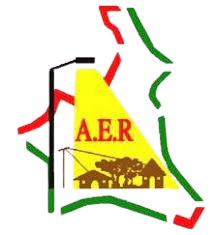Construction project for the small hydroelectric power station of MBAKAOU CARRIERE
LESSORS : European Union (Energy Facility), Private Investor (IEDInvest CMR) and State of CMR.
The Rural Electrification Agency (AER) signed on 06/29/2017, an investment subsidy agreement with the company IED Invest Cameroun through which it undertakes to provide financial support, through the Fund. 'Rural Energy (FER) for the development of the Project entitled "Construction of the Small Hydroelectric Power Plant of Mbakaou-Carrière on the Djérem River and associated rural electrification", in the District of Tibati, Department of Djérem, Region of Adamaoua.
PROJET DE CONSTRUCTION DE LA PETITE CENTRALE HYDROELECTRIQUE DE MBAKAOU CARRIERE
LESSORS : European Union (Energy Facility), Private Investor (IEDInvest CMR) and State of CMR.
The Rural Electrification Agency (AER) signed on 06/29/2017, an investment subsidy agreement with the company IED Invest Cameroun through which it undertakes to provide financial support, through the Fund. 'Rural Energy (FER) for the development of the Project entitled "Construction of the Small Hydroelectric Power Plant of Mbakaou-Carrière on the Djérem River and associated rural electrification", in the District of Tibati, Department of Djérem, Region of Adamaoua.
Consistency of the work carried out:
- Construction of a small hydroelectric power station at MBAKAOU CARRIERE on Djerem West with an installed power of 1.4MW in phase 1, possibility of doubling it in 2th phase ;
- Construction of distribution networks:
- 40 km of lines in 148 mm2 to supply the city of TIBATI;
- 10 km of single-phase MV line to supply the 08 villages under the line;
- 20 km of low voltage distribution networks in the 08 villages;
- 08 MV/LV stations;
- Connection of 300 households and supply of 2,500 households in TIBATI and Mbakaou
All work is completed and inaugurated by MINEE in early 2022.
Energy Sector Development Project (PDSEN)
With a view to improving access to modern energy services for poor populations, particularly in rural areas, in accordance with the recommendations of the National Energy Plan for Poverty Reduction (PANERP) developed as part of the implementation of the Poverty Reduction Strategy (PRSP), the Government of Cameroon and the World Bank have agreed to set up the Energy Sector Development Project (PDSEN). The PDSEN, which spanned eight years (2009-2017), had the development objective of increasing access to modern energy in rural areas by improving planning and management of sector resources in order to support growth.
Energy Sector Development Project (PDSEN)
With a view to improving access to modern energy services for poor populations, particularly in rural areas, in accordance with the recommendations of the National Energy Plan for Poverty Reduction (PANERP) developed as part of the implementation of the Poverty Reduction Strategy (PRSP), the Government of Cameroon and the World Bank have agreed to set up the Energy Sector Development Project (PDSEN). The PDSEN, which spanned eight years (2009-2017), had the development objective of increasing access to modern energy in rural areas by improving planning and management of sector resources in order to support growth.
The project activities were structured around three components, namely: o Component 1: “Rural Electrification” aimed at promoting access to modern energy in rural areas through the establishment of the Rural Energy Fund which is an effective mechanism for financing and planning the extension of rural electrification; o Component 2: Strengthening the capacities of institutions in the sector (MINEE, ARSEL, AER, EDC) to improve the legal and regulatory framework, and the capacities of institutions in the sector to better execute their mandate; o Component 3: Project preparation and management.
With a view to measuring the level of progress in the main results of impacts and effects of the project, four main indicators were retained following its restructuring, namely: (i) Number of direct beneficiaries of the Project (including percentage of women ) ; (ii) Number of new domestic connections in electrified towns and villages; (iii) The Electricity Sector Development Plan (PDSE) and the Rural Electrification Master Plan (PDER) are used as investment supports; and (iv) The preparatory activities of the Lom Pangar project are carried out in accordance with best environmental and social practices and in accordance with the safeguard policies of the World Bank.
In accordance with the terms of the IDA credit agreement No. 4484-CM, it was planned to carry out a final evaluation of the Project by the Government and to transmit the report of said evaluation to the IDA no later than January 31. 2017, date having been extended to April 30, 2017.
In terms of impact, let us highlight in terms of connection to the national interconnected network that the project enabled 80 localities in the West, Adamaoua, North and Far North Regions to be connected to said network. In addition, approximately 567 km of electrical network have been built (i.e. 227 km in three-phase medium voltage, 109 km in single-phase medium voltage, 230 km in low voltage). In terms of population access to electrical energy, we indicate that 10,374 connections were made at the end of the implementation of the related process. In terms of the preparation of major projects in the sector, the PDSEN supported the creation of the ESMP for the hydroelectric dam of the Lom Pangar project, which facilitated the maturation of this structuring project and its implementation in accordance with international environmental and environmental standards. social. Finally, with regard to socio-economic aspects, note that several jobs were created as part of the implementation of the PDSEN although these jobs are temporary. On the other hand, several related activities such as restoration activities have emerged in the infrastructure construction zones and finally the compensation paid to the populations has, among other things, enabled them to undertake income-generating activities.
